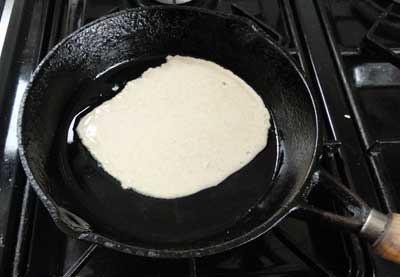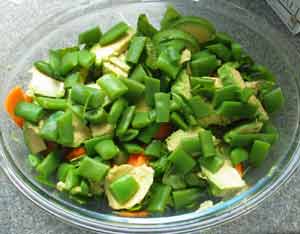Great Cooking Methods to Live By
The number of cooking methods has being expanding ever since early humans first threw a hunk of meat onto an open fire. Cooking our food has a good few benefits that we all appreciate; food is often easier to chew, new tastes are discovered and elements of nutrition are unlocked. Nevertheless, many cooking methods also degrade foods, lose valuable vitamins and even add toxic chemicals to the finished dish.
So which are the best cooking methods to live by from the viewpoint of health, nutrition and green living? And, if a cooking method is good nutritionally, will it stack up as a green way to cook?
Here’s a look at some of the commoner cooking methods and their benefits and deficiencies.
The Cook's Evolution
- Why we need to return to our roots
Boiling and steaming
Boiling was the cooking method of choice when I was a child. Vegetables and even meat were just simply boiled in a pan until soft or thoroughly mushy. The hook with boiling foods is that it is a simple and accessible cooking method – you just need a pot and some water to which you add your food.
Is boiling a great cooking method? No, not really, as many of the nutrients are wasted. Vitamins and minerals leach out into the cooking water and like as not are just poured off before serving.
From a green perspective there are certainly far better methods of tenderising and cooking, too. Boiling tends to use quite a lot of water and other methods are better at conserving fuel use.
Steaming
Steaming is a better method than boiling in that essential nutrients are better retained in the foodstuff.
If you use a steamer with a transparent lid, it is quite easy to control the process so that overcooking is less likely. As the food sits above the water, it is easy to see what is going on. Vegetables can be removed when they are bright green and still retain a little crunch.
Multi-layered steamers make it easy and economical to steam several things at once and yet keep them separate. Foodstuffs that need the longest time go at the bottom layer and faster items are added to the upper layers. You can also do something similar with a pressure cooker.
Herbs and seasonings can be added either to the water or to the vegetables.
Less water is needed than for boiling. Bigger items such as potatoes may a bit longer, so you do use more energy, which is a very important consideration form the standpoint of green living.
Both boiling and steaming do have their place in the modern kitchen. Cookery writer Delia Smith makes the point that some vegetables just do not cook adequately if they are steamed. Instead, they loose colour a flavour. Whole cabbage is better boiled, for example. However, I find it cooks fine if you just shred it first before steaming it.
Quality steamers are available from Amazon.
Poaching
Poaching foods such as eggs, fish and some meats can be a successful way to cook with little or no fat. If done using a suitable container it can limit both the amount of water used and the amount of fuel.
Poaching in a container or wrap of cooking foil allows the food to cook mainly in its own juices; this is great for preserving both taste and nutrients. Cooking foil is not a very sustainable product. If you like to use it, recycle it as much as possible or buy tin foil that is a product of recycling. That way, you cut down on your use of the embodied energy of the product and so lessen your “cookprint”.
Even better, buy a reusable container designed for poaching.
Poaching in temperature controlled water baths has become popular with many chefs. The amount of water heated is usually very large compared to the quantity of food poached. This allows for good temperature control for the individual dish but is a particularly energy intensive way of cooking.
For poaching at home, use as little water as you can and keep it at a simmer rather than boiling it. This will keep the energy used within reasonable bounds.
You can also poach with very minimal quantities of fat, if that is important to you.
Stir-frying
Frying has a bad reputation for producing health-damaging free radicals. But stir frying is really rather different.
Stir frying needs a good quality oil which can withstand the high temperatures used without breaking down into toxic compounds. Food is very quickly heated and cooked from the outside in and after the initial searing, usually most recipes call for a little added water or other fluid. The food then continues to cook at a rather slower speed.
Stir frying is a great way to retain vitamins and cook quickly and efficiently. Provide you take care not to burn the food by watching and turning or tossing the pan, this cooking method should not result in the build up of unhealthy by products.
To speed up stir-frying and be more economical with fuel, I like to add a lid in the later stages. This also prevents food from drying out.
Stir-frying is a fast and efficient method of cooking, which preserves the taste and qualities of the food well. It’s important to do it carefully and attentively, so as not to burn or overcook the food.
Baking
Many dishes are best baked or roasted. In fact, what passes for roasting is often better described as baking, as there is no open flame in use.
Some Cooking Methods to Avoid
Microwaving
Microwaving has not yet been proved to be a healthy way to cook. It is certainly fast and may save on energy for many dishes, so in that respect it could be classed as a relatively green cooking method.
The denaturing of protein which happens during microwaving gives cause for concern. A cook's business must be to preserve as much of the nutritional benefit of the food as possible.
Frying

Frying has a bad press because many fried foods are over-fatty and because burnt fats are toxic, releasing free-radicals into our blood systems. Fried food can be lovely as an occasional treat but it is certainly not a healthy way to cook if you use it often.
If you like fried foods, use a suitable oil that can cope with the high temperatures. Animal fats such as lard and butter can be very good for frying if you take care not to let the fat burn.
Picture, right: Frying a pancake - healthy once in a while!
Char-grilling
Char-grilling also creates free radicals. Barbecued foods are especially bad because often the food ends up being quite badly charred and the smoke from imperfectly burnt fuel is quite toxic, too.
Simple grilling under standard cooker grill can be a good way to cook fatty meats as many of the fats can run off into the grill pan.
Tasty healthy food
The principle for good cooking methods for health and green living has to be a combination of two main things; cooking without harming the food and cooking using minimal fuel.
If you follow these two principles you will be both cooking for health and be helping protect us all from damaging climate change. We all need to consider these aspects of our lives if we want to be healthy and productive in a sustainable way.
Probably the healthiest food is uncooked, or nearly so. Salads and raw fruits and vegetables contain massive amounts of phytochemicals and enzymes which cooking nearly always damages.
If you have a great cooking tip or cooking method to share, please use the Add Your Tips! button on the nav bar. Thank you.
Great Cooking Methods - top of page
Natural and Organic Foods (Green Kitchen)
Greenfootsteps Home - for more easy green living ideas
Great Cooking Methods to Live By, copyright Greenfootsteps.com 2011
Please do not copy without permission.
| Tweet |

| Tweet |

Sponsored links
Other pages which may interest you:
Buy a slow cooker for cheap easy dinners
Using a pressure cooker to save energy in the kitchen
Cooking with a pressure cooker is cheap and easy
Footprints
- an occasional e-zine from Greenfootsteps
If you would like to receive the e-zine, please just sign up below.







New! Comments
Have your say about what you just read! Leave me a comment in the box below.